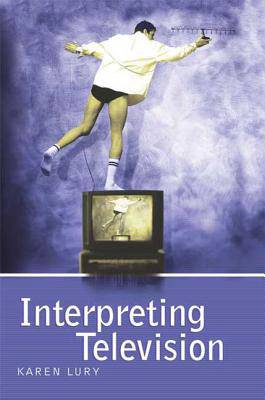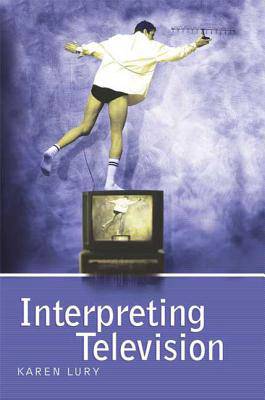
Je cadeautjes zeker op tijd in huis hebben voor de feestdagen? Kom langs in onze winkels en vind het perfecte geschenk!
- Afhalen na 1 uur in een winkel met voorraad
- Gratis thuislevering in België vanaf € 30
- Ruim aanbod met 7 miljoen producten
Je cadeautjes zeker op tijd in huis hebben voor de feestdagen? Kom langs in onze winkels en vind het perfecte geschenk!
- Afhalen na 1 uur in een winkel met voorraad
- Gratis thuislevering in België vanaf € 30
- Ruim aanbod met 7 miljoen producten
Zoeken
Omschrijving
While most television textbooks concentrate on areas such as institutions, audiences and genre, Interpreting Television takes a radical approach that returns to the currently under-explored textual aspects of television. Continuing and responding to work begun by John Ellis in Visible Fictions and Raymond Williams in Television, Technology and Cultural Form, the book addresses the formal aspects of television in a lively and accessible manner. Each chapter investigates a major formal feature-- sound, image, time and space providing an introduction to each aspect and culminating with in-depth case studies of selected programs. The book offers full coverage of programs and programming including Friends, CSI: Crime Scene Investigation, Who Wants to be a Millionaire?, Teletubbies, cartoons, music programming, documentaries, news reports, channel identities and advertising. Features peculiar to television, such as the changing dimensions of the picture ratio and the laughter track are discussed here to reveal how, and why, they contribute to the creation of a televisual aesthetic. Written by an experienced teacher and television addict, the book is aimed at undergraduate students in media and cultural studies, but looks to change everyone's thinking about television form.
Specificaties
Betrokkenen
- Auteur(s):
- Uitgeverij:
Inhoud
- Aantal bladzijden:
- 208
- Taal:
- Engels
Eigenschappen
- Productcode (EAN):
- 9780340806135
- Verschijningsdatum:
- 1/06/2005
- Uitvoering:
- Paperback
- Formaat:
- Trade paperback (VS)
- Afmetingen:
- 166 mm x 230 mm
- Gewicht:
- 362 g

Alleen bij Standaard Boekhandel
+ 152 punten op je klantenkaart van Standaard Boekhandel
Beoordelingen
We publiceren alleen reviews die voldoen aan de voorwaarden voor reviews. Bekijk onze voorwaarden voor reviews.









